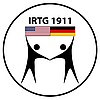A2 (2013 - 2016) – Dynamics and characteristics of interaction between dendritic cells and T cells in the airways of asthma-susceptible and resistant mice
Franziska successfully defended her thesis in June 2017!!
Publications:
Hoffmann F, Ender F, Schmudde I, Lewkowich IP, Köhl J, König P, Laumonnier Y. Origin, Localization, and Immunoregulatory Properties of Pulmonary Phagocytes in Allergic Asthma. Front Immunol. 2016 Mar 23;7:107. Review. PubMed PMID: 27047494.
Project:
DCs are major regulators of the adaptive immune response in allergic airway inflammation. In mouse strains that develop a strong asthmatic phenotype (A/J, BALB/c), resident CD11b+CD103- and CD11b-CD103+ mDCs drive the expansion of pathogenic T cell subsets (Th2, Th17) and support the development of robust allergic airway inflammation and airway hyperresponsiveness (AHR). In contrast, in strains that develop less severe asthma (C3H/HeJ, C57Bl/6) pDCs drive the development of a strong protective (Treg) T cell response that prevents the development of robust AHR. This demonstrates that differential DC activity can drive differential development of asthma. Moreover, we have demonstrated that the ability of Tregs to limit the development of AHR in asthma-resistant mice is, at least in part due to their ability to limit the activity of pulmonary mDCs. However, the mechanisms whereby selective pDC activation occurs in asthma-resistant mice and selective mDC activation occurs in asthma susceptible mice remain unclear.
Aims:
- Characterize the recruitment and antigen uptake by distinct DC subsets in the lungs of asthma susceptible and asthma-resistant mice.
- Determine if and where Treg:DC interactions occur in the lungs of asthma resistant and susceptible animals.
- Dissect the importance of pulmonary DC:T cell interactions in promoting the development of AHR in previously sensitized animals.







